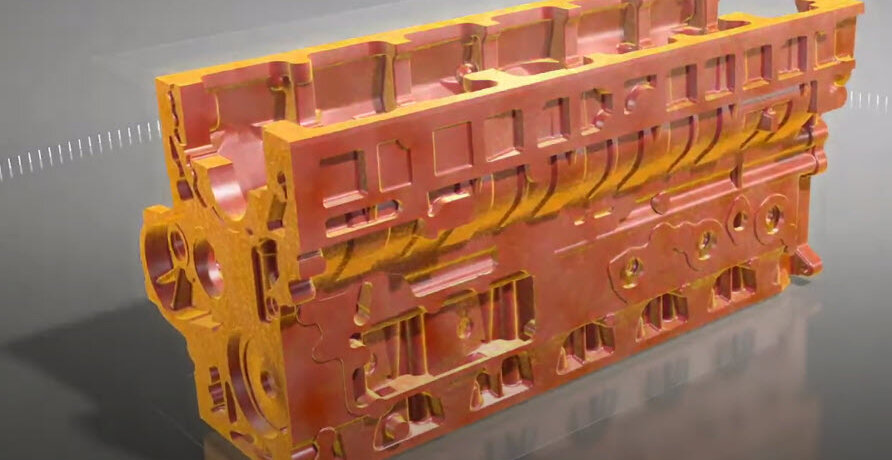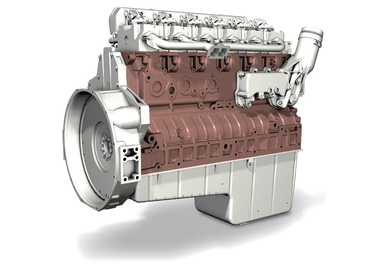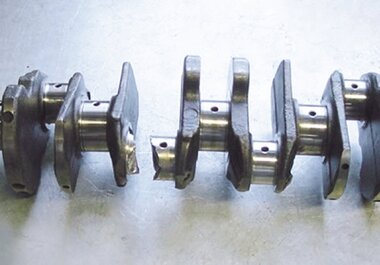
Structure and function of a crankcase (3D animation)
Information on the product
What is the purpose of a crankcase? What are the requirements of a crankcase? What is the structure of a crankcase? What material is it made of? Find out in this video.
The crankcase is the central component in the engine. It houses the entire crank mechanism including pistons, cylinders and connecting rods. Accessories, the transmission/gearbox and the engine control system with cylinder head are attached to the crankcase.
Due to the oil and cooling channels required for cooling and lubrication purposes, the crankcase is the most complex cast part in a combustion engine.
Cavity-free casting can only be achieved through the use of sophisticated casting technology and precise compliance with pouring and cooling times.
Alongside the quality of the moulds and (sand) cores for the internal shape, the composition of the casting material is also crucial to achieving excellent results.
Main components of the casting material:
91.2 – 97.3% iron
2 – 4% carbon
0.3 – 1.2% manganese
0.1 – 0.6% phosphorous
0.3 – 3% silicon
Greatest precision down to the last detail
Modern crankcases can only be manufactured and tested using CAD systems. Absolute dimensional accuracy across all faces and bearing blocks is essential for ensuring the requisite functionality and quality.

